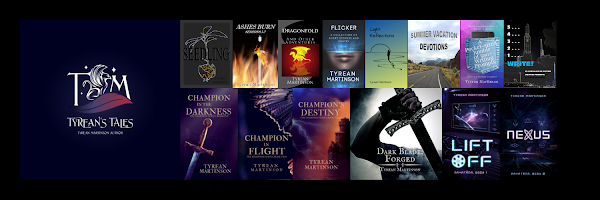While writing a post about the handful of items which will get me to put a book down and never pick it up again, usually in combination with each other, I stumbled across an area that really bothers me: setting gone wrong.
I understand we can't always know a place perfectly. Businesses change. Roads sometimes even change. A culture may shift. However, we have Google maps, guidebooks (from the library), and other ways we can check our settings.
With my own feelings about settings, I struggle to write real world settings for fear of getting them wrong.
There are ways to handle setting details creatively: A writer can create a fictional town in a known place. A writer can focus on details important only to character development and chop the rest. And, a writer can research.
The following is a list of things I "know" about living in Washington State since I've lived here my entire life (from the 70s to now). I may not "know" it the same way someone who is new here does, but these are tidbits of information which might help any writers who want to set their story here.
- Everyone who lives here gets tired of explaining, "no, the state, not D.C."
- We complain about the rain, but we not-so-secretly love it here.
- We love our mountains, our lakes, our Puget Sound, our ocean, our rivers, and our islands.
- Anything with water is a good activity, whether it's liquid, steam, frozen, or snow.
- Most people from the West side can't drive in snow or ice unless they ski/snowboard regularly; however, in all fairness, we do have 8% grade hills in our downtown city areas, and throughout our suburbs. If you visit here during the winter, do not be surprised if all of the schools are closed because we have a tiny bit of black ice and a few inches of snow.
- However, if you are on the East side, you'll find snowmobiles, big trucks, and sporty cars driving in three feet of snow.
- Apples and most crops grow best on the East side, but some wineries and farms do well on the West side.
- While some organizations like the Ku Klux Clan have been in Washington since the 1800s, most Washingtonians pride themselves on being anti-racist and those types of groups are pretty quiet. My grandparents did have a cross burned on their lawn in the late 50s and I did have some run-ins with Clan kids in the 80s, but racism is considered unacceptable by most people here, on either side of the state.
- Diversity is normal in Washington State. Yes, some residential areas are more filled by one ethnic group or another, but going about our daily lives, we work and play with many cultural, ethnic, and racial groups. I student-taught at a high school in Seattle at which 70% of the students had come to the USA in their life-times. That was in the 90s.
- Clothing styles, as noted earlier, run to casual. We all like to think a hike/kayak/bike adventure might break out at any moment. Suits are for business, and sometimes, for worship. Casual Fridays at offices are normal, and by casual, we mean jeans/shorts/polos/t-shirts/sandals/tennis shoes. Anything dressier is dress casual. I know, after traveling a bit, that most of the US, especially the East and the South, dress up a bit more than we do in the West.
- It's rare I that get asked about cowboys in the wild west, but just in case you are wondering...No, we don't have cowboys here, not like in the old movies. We do have cattle owners and horse owners who may look like modern cowboys, but they carry smart-phones like everyone else, and usually don't live off the grid. Between the ages of 7-14, I raised four cows on the outskirts of a small, redneck town, and I never owned a pair of cowboy boots. I did get told "just carry a stick" when I said I was afraid of the cows trampling me during my barn chores. (Yeah, thanks, mom, dad, and grandparents.) I nearly got trampled at least a half dozen times, but became a pretty fast runner. (silver lining)
- On the other side of things, human trafficking is a huge problem here. We have port cities, massive groups of hotels, and major highways.
- Due to the above, it's pretty common, even if a woman is anti-gun, to carry bear spray or another type of defense, either openly (like in the cup holder of a jogging stroller on a local walking trail) or hidden.
- Northwesterners are less likely to use "sweetie, honey, darling, miss, or missy" and using those can be considered rude/impolite/overbearing, depending on the situation. Some Northwesterners do use terms of endearment in family/friend groups.
- Everything and anyone of any gender can be "dude" in casual conversation, but not usually professional conversation.
- So, we're casual, but sticklers about not using terms of address in conversation.
- Sarcasm is normal.
- "Yeah, no" means "no" or "I agree with you that what you've told me is bad."
- "No, yeah" means "yes" or I agree with you.
- "Yeah, no, yeah," usually means "agreed."
- Dropping the ends of sentences is normal. Run-on sentences in conversations are normal. There is no hard "punch" of sound at the end of sentence like Eastern US speakers use. Good luck figuring out when we're done speaking. If you don't jump in, we'll continue or decide the conversation is over.

No comments:
Post a Comment